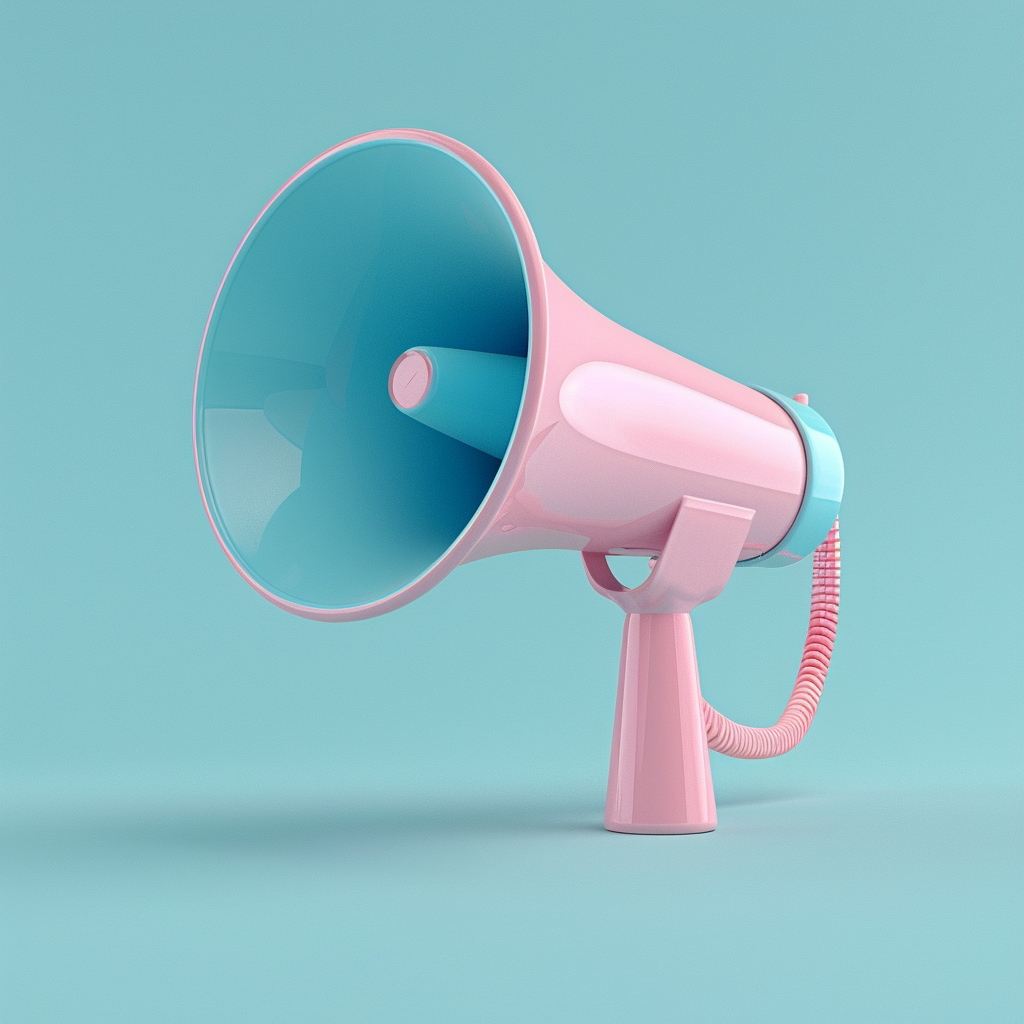As a storyteller, there are countless ways to leverage your content and achieve meaningful business results. Whether you’re looking to increase paid subscriptions, drive affiliate revenue, or acquire new, high-value email subscribers – content is like a master key to success.
What’s more, when you combine the value and versatility of your content with Facebook’s ability to reach large audiences at scale, you can create something extraordinarily powerful for driving conversions: a content-based funnel. That’s right; direct response campaigns are not your only option. In this blog post, we’ll teach you how to use a content-based funnel and paid distribution on Facebook to convert casual readers to loyal members, and loyal members to paying subscribers.
In order to recognize the value that content-based funnels offer, it’s important to first understand the strategy behind them. Content-based funnels employ a “soft sell” approach that’s designed to gradually guide users toward conversion. Unlike direct response strategies, which aim to immediately convert a user, a content-based funnel engages readers with content in order to move them along multiple stages leading up to a final conversion event. This process of using content to methodically move users down a marketing funnel is a strategy called sequencing.
There are many types of content-based funnels. They can be short and require minimal effort from the user, like a funnel for acquiring newsletter subscribers. They can also be long and require users to reach a high level of engagement, like the journey of nurturing new readers into becoming paying subscribers.
For simplicity’s sake, let’s first look at a generic, four-step content-based funnel through the lens of a publisher.
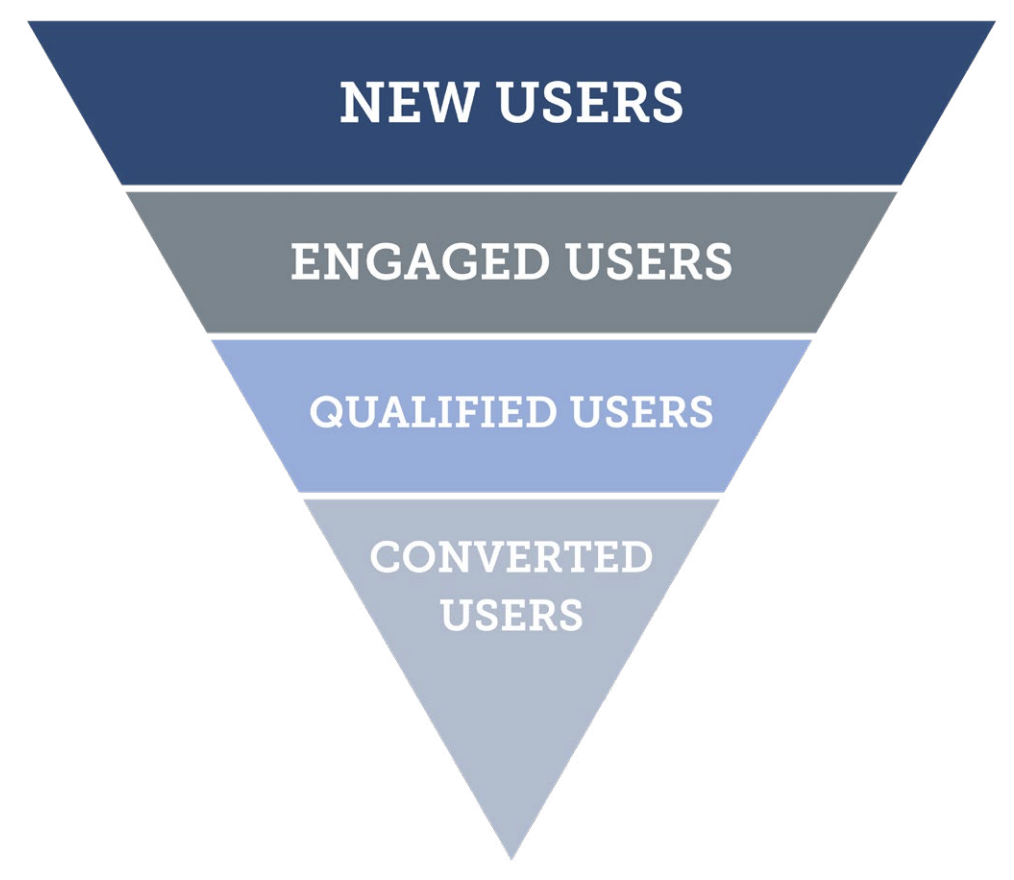
1. New Users – At the top of the funnel are new users who have just clicked on a Facebook post to view an article.
2. Engaged Users – New users move down the funnel to become engaged users after consuming content – an article, slideshow, video, etc.
3. Qualified Users – Once they’ve taken an action to qualify themselves as good candidates for conversion, engaged users become part of the qualified audience.
4. Converted Users – Finally, some members of the qualified audience complete a final conversion action (purchase, sign up, etc.) and become converted users, reaching the bottom of the funnel.
Your final funnel will ultimately depend on a variety of factors. To illustrate this approach, we’ve chosen a five-step funnel that converts a new user to a paying subscriber.
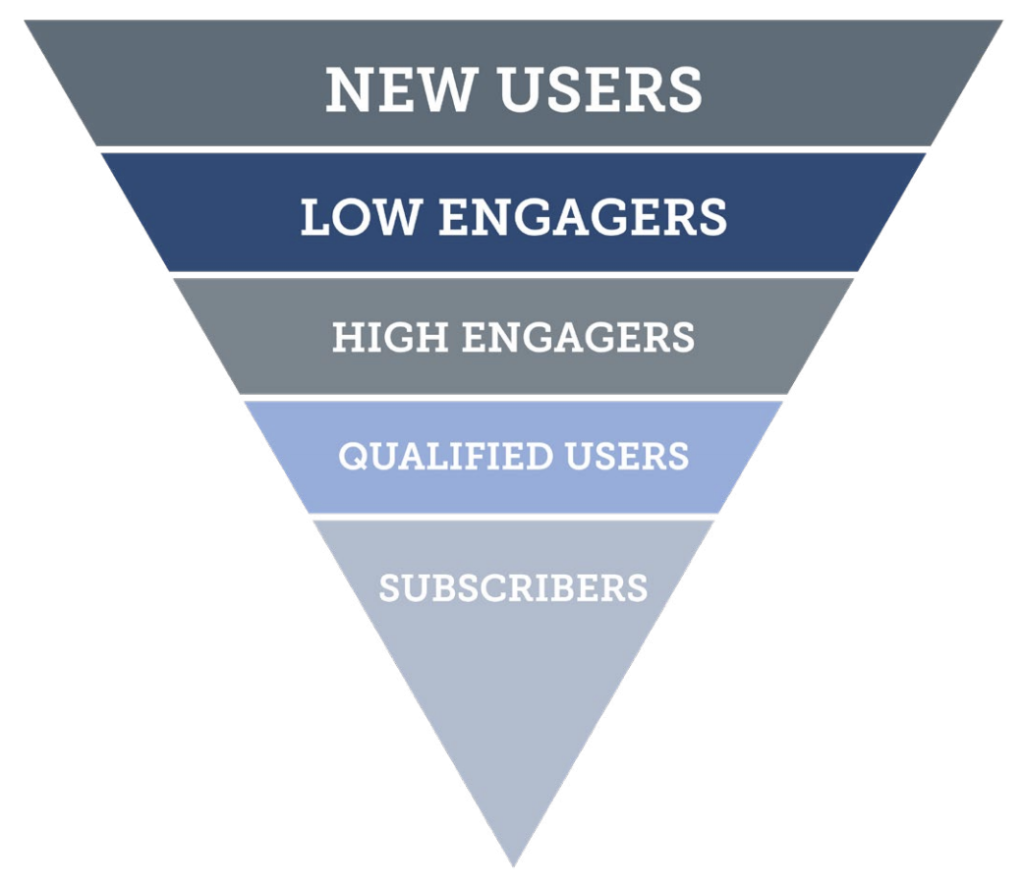
The Benefits of Sequencing
While direct response marketing has a long history of efficacy, there are a few noteworthy drawbacks, including high cost-per-acquisition (CPA) prices and difficulty scaling campaigns. Luckily, many of these shortcomings can be overcome by implementing a content-based funnel and sequencing approach.
Overcoming High CPA Costs
Anyone who has managed direct response campaigns will tell you that they are not cheap. It makes sense, though: for nearly all direct response campaigns, users are asked to take some sort of action – and to do it in that exact moment. Naturally, this translates into low click-through rates in an exceedingly crowded space, driving up CPC and CPA prices.
With a content-based funnel, however, the roles are reversed. The publisher isn’t asking something from the user, but instead is offering something of value to the consumer: content. In providing value for “free,” the intention is still to convert users, but to do so by showing meaningful value over multiple touch points.
Overcoming Challenges Scaling
Direct response campaigns can be difficult to cost-effectively scale, especially if readers are unfamiliar with a brand. It’s not hard to imagine that people would be open to reading a helpful article from an outlet that they’ve never heard of. It requires very little effort and readers walk away having gained valuable information. Getting people to make a purchase from an unfamiliar brand? Not nearly as easy. Even if people are familiar with the brand, those people exist in finite numbers, and eventually even successful direct response campaigns will suffer diminishing returns.
Overcoming The “Stickiness” Problem
Since direct response methods all but eliminate any consideration phase that users go through before converting, they tend to be “bouncy,” meaning they have low engagement and high drop-off rates. By using a content-based approach, there’s a much higher chance that the user will engage with the content (they self-select, after all), and perhaps go on to consume additional content during the same session, moving them further down the funnel and increasing opportunities for conversion.
Content Selection and Sequencing
Unsurprisingly, content selection is key to the success of a content-based funnel. That said, it takes time to figure out what content is going to work best. Due to the fact that testing a content-based funnel can be expensive, especially if there’s an acquisition event involved, we recommend considering the following questions before spending a single cent on paid distribution.
1. What evergreen content do you have that has performed well historically? Choosing evergreen content allows your content-based funnel to stay evergreen.
2. What kind of content are you best known for? What content is interesting to readers? Where do users click first on your site? Where do they spend the most time? Are loyal users or subscribers over indexing on a certain type of article or video? You can leverage the content most interesting to the users who are currently converting in order to find other qualified audiences.
3. What stories do people read right before converting? Often, this is in line with the content you’re best known for, but can vary vastly from publisher to publisher. For some, it will be a great sports section. For others, it’ll be intriguing opinion pieces. This content will be a crucial tool for lower-funnel targeting.
With your answers to these questions in mind, the next step is to actually select the content that you’ll use for your funnel. In the early stages of the funnel, you want to find the right content to bring new audiences into the site, and then keep them coming back. After bringing the right users in for the first time, you can bring them back easily with more “clicky” content at a very low price. As you move further down in the funnel, you have fewer, more engaged users. You can use your best converting content and a higher bid in order to bring them back to the site and convert them.
Bringing It All Together: “The Keywee Times”
In order to illustrate the process of sequencing, let’s walk through an example using our fictional publisher, The Keywee Times. For this, we’ll assume that The Keywee Times is a news outlet that, in addition to regional news, is well known for its personal finance section as well as its food-related content.
After performing a thorough analysis like the one described in the previous section, The Keywee Times has mapped out a five-step funnel for bringing in new users and converting them into paid digital subscribers.
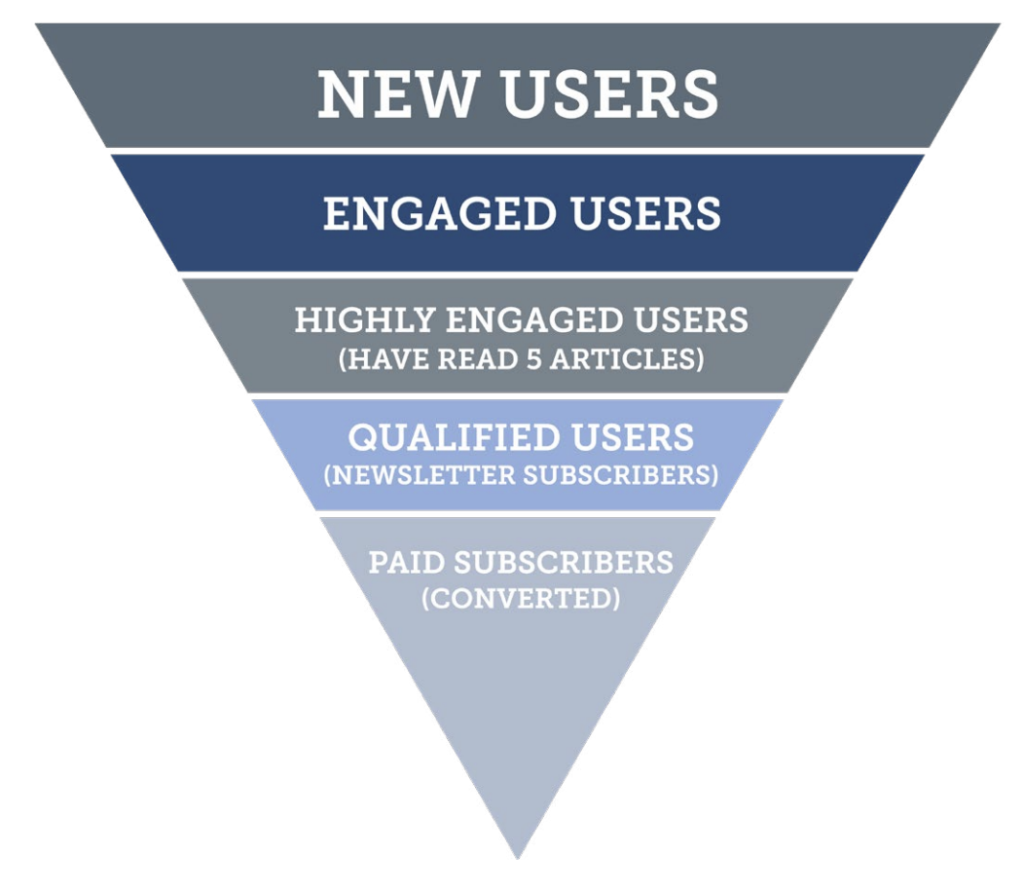
Now that The Keywee Times has mapped out its funnel, the next step is to decide which content will be distributed through Facebook at each step in order to move users down the funnel.
To get people into the top of the funnel, The Keywee Times should choose evergreen content that embodies what both subscribers and non-subscribers love to read. The team chooses an article titled ‘6 Easy Ways You Can Start Saving Money Today’ and others like it from the lifestyle section of its site. For audience targeting, The Keywee Times starts by creating a Facebook Lookalike Audience using its existing subscriber base.
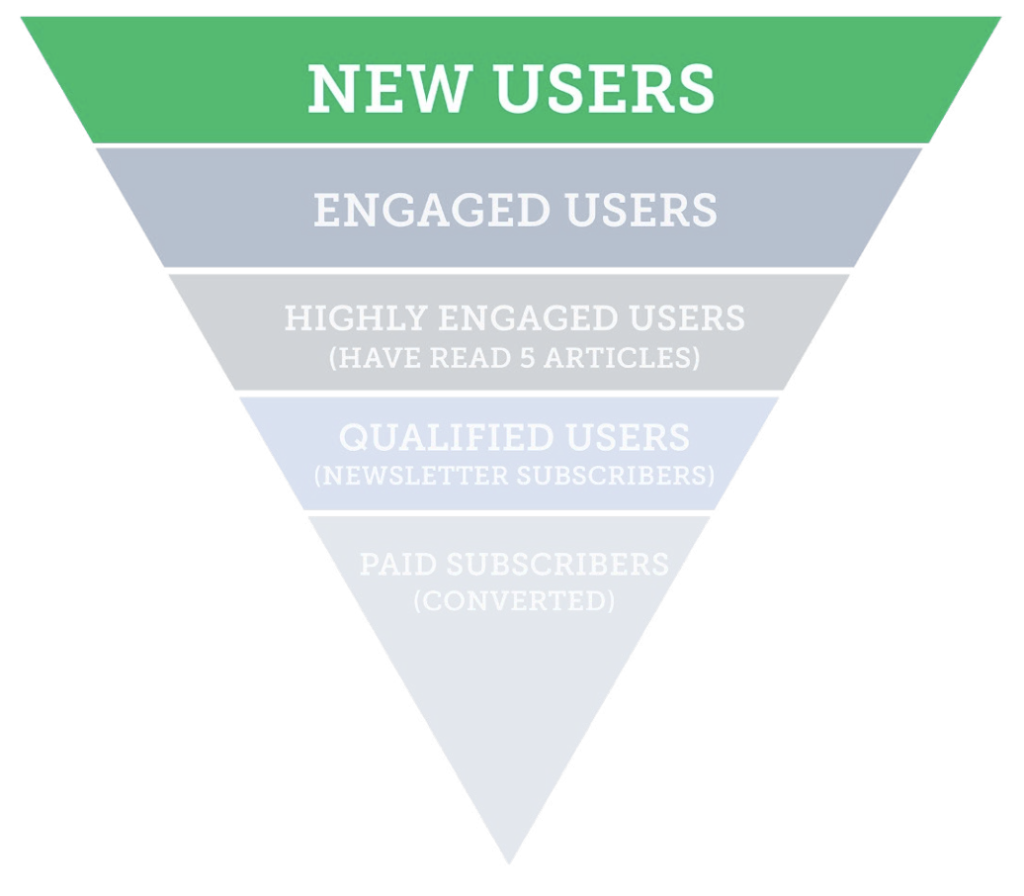
To continue engaging readers and moving them down the funnel, The Keywee Times targets the audience who has already clicked on the ‘6 Easy Ways You Can Start Saving Money Today’ with more “clicky” content. Articles include ‘I’m 60 – Here’s What I Wish I Knew About Money 40 Years Ago’, ‘The Ultimate Guide to Your Local Elections’, and ‘5 Easy Recipes Using Locally Sourced Foods.’
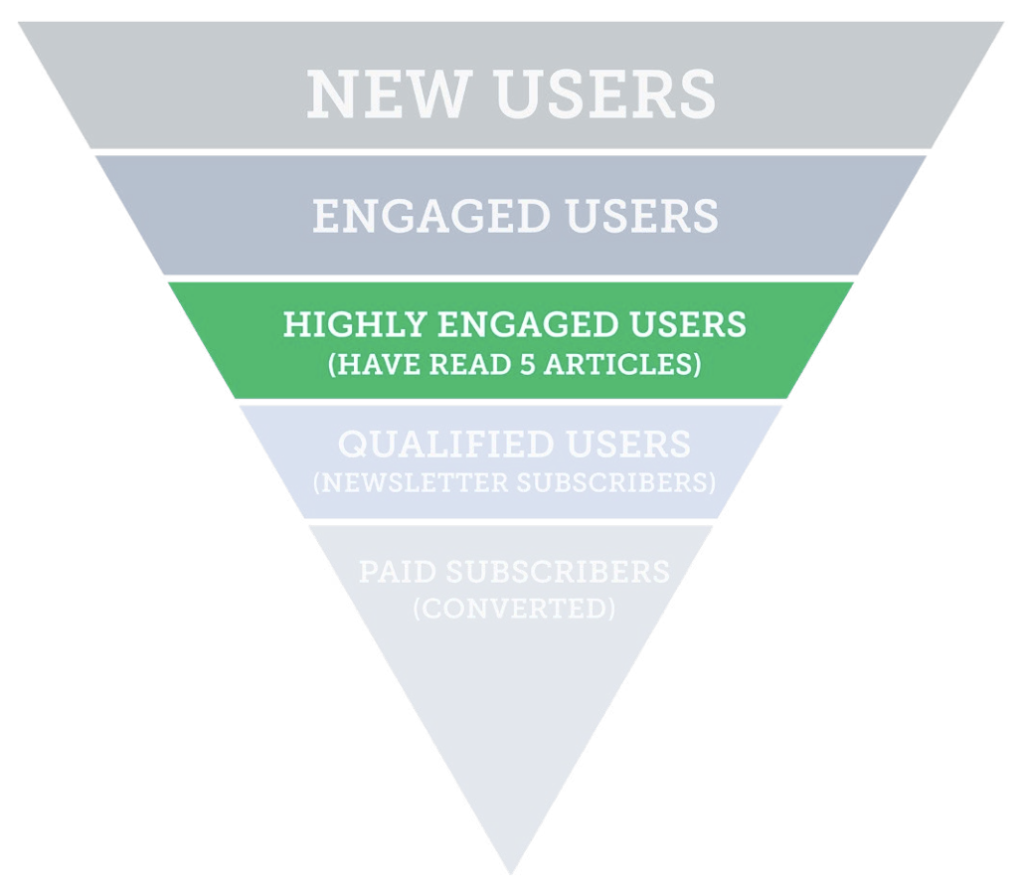
Through its analysis, The Keywee Times has determined that, after reading five of its “core” articles within a month, new users have reached a point where they see the value in The Keywee Times’ content and are considered “qualified.” It’s also at this point – having read five free articles within a month – that The Keywee Times triggers a paywall for the user.
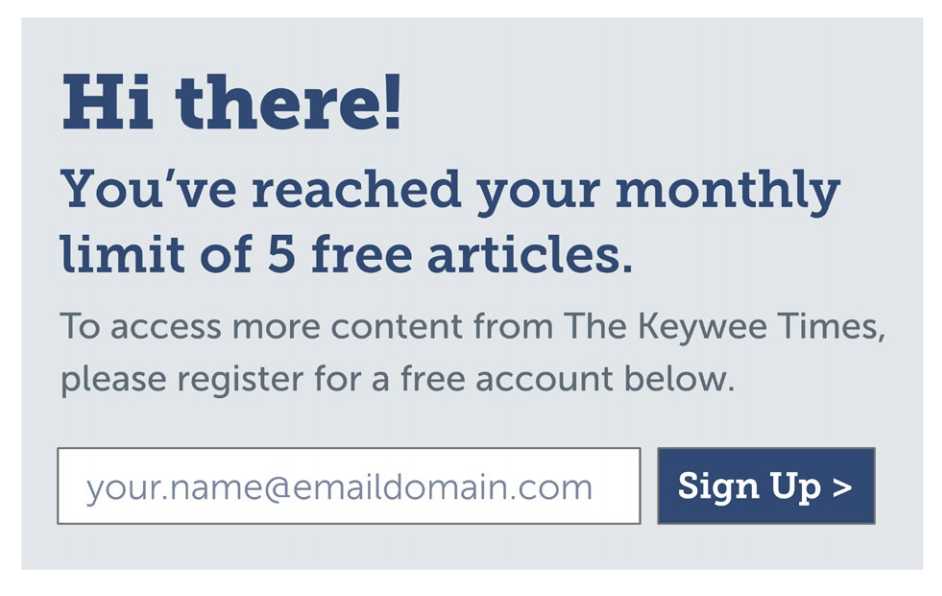
Finally, The Keywee Times targets these qualified users with content that has the highest rates of converting users to paid subscribers. This typically isn’t as “clicky” as some of the content used during the middle of the funnel, and therefore CPCs may be relatively higher. This is fine if you can justify the bump in price by driving users to convert to paying subscribers.
Let’s take a second to recap the sequencing strategy:
- Bring in new users to your site with your “core” content.
- Use content that is more “clicky” (usually lower CPCs) to bring them back to your site.
- Continue targeting these users, using content to build a habit and show value.
- Push users to subscribe with a call to action – on site, or with a direct response ad.
Further Reading + How Keywee Can Help
Content sequencing in combination with paid distribution is a powerful strategy for publishers looking to achieve a variety of business results, especially to drive paid subscription sign-ups. Due to their versatility, sequencing not only helps publishers generate recurring revenue by way of subscription fees, they also help build audience trust and loyalty.
Our eBook, Using Content to Convert, covers the topics discussed here in greater depth. It also contains advice for initial campaign testing and optimization, finding the best audiences, determining pricing benchmarks, and much more. You can access the eBook by filling out the form below.
If you’re looking for more advice on building a content-based funnel or need help scaling your current paid distribution efforts on Facebook, please reach out to book a demo.

